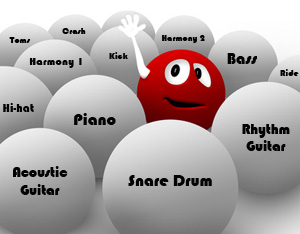Making The Vocal Track Sit Well In The Mix

I am always saying that knowledge trumps gear. It’s actually our motto at HBA.
One of the many reasons for that is how easy it is to make a recording that sounds bad even with the most expensive gear.
And one of the things I hear done incorrectly most often is mixing the lead vocal with the rest of the instruments in a song. It is very easy to make the vocal stand out too much or allow it to be overpowered by those instruments.
Creating space for the lead vocal so that it can be properly heard and understood while simultaneously allowing the drums, guitars, bass, piano, etc. to be head as well can be quite a trick.
There are several methods we use to make this happen, including compression to create a more even vocal level, and ducking (see our article – What is Ducking In Audio Recording? for a review of that technique) to sort of push everything else to the background ONLY when the singer is singing.
There are automated effects (FX) that do these things for us, but very often you can get a more natural and cleaner result by using volume envelopes to manually increase or decrease the level of certain phrases and words on a vocal track.
It can take a lot (and I do mean a lot – like an hour or more sometimes for one track) of extra time to do it this way. But the result is usually worth it, especially for control junkies like me:).
In the video below, by Russ at AIR Users Blog, he shows us a technique that is a version of ducking, except that it’s done manually by riding the fader to create editable changes in the volume envelope of the instrument submix track.
Riding the fader is a time-honored technique that we used a lot in the days before computer audio recording. It basically means keeping your fingers on the fader of a track and moving it up and down over the duration of the song. It will make more sense in the video below:
